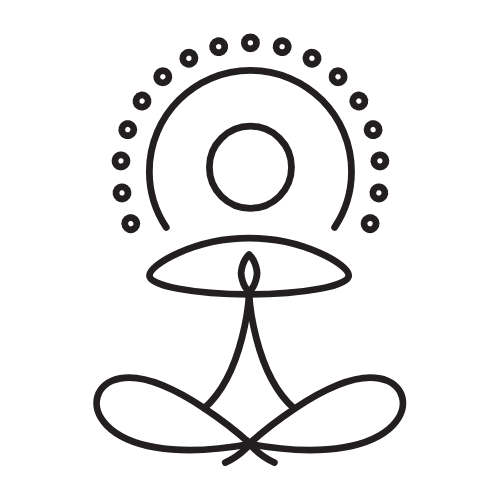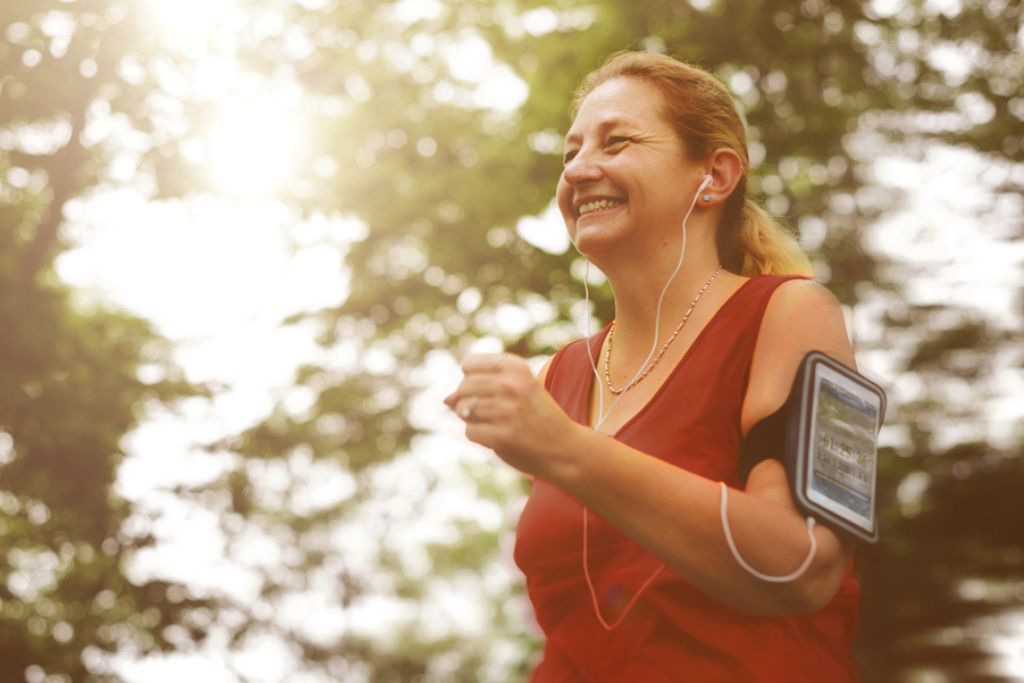Whether you’re 25 or 52, there’s never a bad time to kick-start your fitness journey and reap the rewards of regular physical activity. However, you might want to approach movement differently as you get older in order to get the most out of it – and avoid any pesky injuries.
For adults, the CDC breaks down its age-based recommendations for adults into two categories: 18 to 64-year-olds and those over 65. For those aged between 18 and 64 years, they recommend at least 150 minutes a week of moderate-intensity activity alongside at least two days a week that include strength training exercises. For those aged over 65, they recommend adding in activities designed to improve balance.
While this advice is a great starting point, how should you plan your workouts based on the decade you’re in? After all, your body and lifestyle at 60 will be different from your body at 30.
Exercising in your twenties and thirties
Your twenties are a great time to establish healthy habits that will last a lifetime, but it’s also normal for routine to go out the window during this decade. After all, it’s a period of time that’s often jam-packed and full of change and some days you’ll struggle to fit in anything longer than a quick workout.
Perhaps you’re going off to college or university, or leaving home for the first time. You might even be moving further afield, chasing new adventures interstate or overseas. Maybe you’re jumping from job to job trying to figure out what career path is right for you or thinking about starting a family.
Everyone’s twenties look completely different and it’s normal to feel like you don’t have all your ducks in a row – and the same goes for your fitness routine. Remember, the best workout schedule you can have is the one that works for you. If you’ve got a consistent workout rhythm going that you love – amazing! Otherwise, just strive to move your body every day and discover what styles of movement you enjoy.
One compelling reason to make regular exercise part of your life in your twenties? You’ll reap the rewards as you get older. A 2016 study published in JAMA Internal Medicine found that higher levels of baseline fitness and improvements in fitness in early adulthood may play a critical role in promoting cardiovascular health and reducing the risk of cardiovascular disease.
Many experts believe our twenties are when our bodies are in their physical prime. During this decade, your hormones are working hard behind the scenes to keep your body in optimal baby-making condition, with hormones like estrogen peaking in your mid to late twenties. For many women, your menstrual cycle might start to get a bit more consistent, making planning exercise around your cycle much easier!
If you’ve been diagnosed with polycystic ovary syndrome (PCOS) or endometriosis, you might want to make adjustments to your workout plans depending on your symptoms, and you should also include pelvic floor exercises in your routine if you don’t already.
According to one study, it’s also believed that your twenties is when bone mass peaks. As we know, nutrition and exercise are both crucial in helping to reduce your risk of osteoporosis, with strength training, weight-bearing exercises and balance all playing an important role.
Looking to include more strength training in your routine? Sweat has a number of different programs available. There are gym-based programs like Strength & Resistance or Katie Martin’s Strength & Sculpt, or you could try LIFTING at Home if you want to bring strength training to your house!
You might also find you have a lot of energy during this time in your life – so it’s essential to be aware of the risks of overtraining and prioritise rest days. The last thing you want is for your workout routine to end in fatigue, injury or hormonal issues.

According to the Australian Government Institute of Health and Welfare, the average age of mothers has been rising over time, and currently sits at 30.9. In fact, the highest proportion of mothers in Australia are currently aged between 30 and 34.
For many women who choose to have children, this means their thirties are often dominated by family planning. This impacts how we work out in so many ways, from changing how we’re moving our bodies as we’re trying to conceive to seeking out exercise programs designed to help you move with confidence throughout each trimester.
Sweat has two pregnancy programs available – Pregnancy with Kayla and Pregnancy with Kelsey. These 40-week programs have been designed to help keep you moving and feel strong from bump through to birth – with the support of your healthcare provider, of course.
Once you have clearance from your healthcare provider to start exercising again after giving birth, you should take a gradual and progressive approach to rebuilding your strength and fitness. Kayla and Kelsey also have post-pregnancy programs available for women who have been cleared to return to fitness after welcoming a baby.
We’re the first to admit life looks VERY different after welcoming a little one, and juggling fitness and family is no walk in the park.
“At the beginning, you are on autopilot survival mode and it feels like you can’t do anything. You just need to give yourself some grace, space and time to understand that it’s a short period in your life, and if you’re able to go for a walk or fit ANYTHING in, that’s great! But if you can’t, it’s ok to just chill out,” says Kayla.
One thing all of the Sweat Trainers agree on? Just how effective short workouts can be. Fit in what you can, when you can.
Exercising in your forties and fifties
Finding ways to include movement in your daily life is still SO important in your forties and fifties. Even if exercise hasn’t been part of your routine up until now, it’s never too late to start.
Remember, at least 150 minutes a week of moderate-intensity activity alongside at least two days a week that include strength training exercises is recommended for your forties and fifties.
Sarcopenia – an age-related, involuntary loss of skeletal muscle mass and strength – can begin as early as in your thirties and evidence suggests it declines in a linear fashion. One study points to muscle mass decreasing at a rate of approximately 3-8% per decade after your thirties, so you might be feeling the effects of this as you get older. This study also highlighted the important role of exercise (particularly resistance and aerobic training) in improving muscle growth and function, saying it can have “dramatic effects” on muscle mass and strength.
There are a few other things to be mindful of during these decades. Persistent aches and pains – whether these are the result of an aggravated injury or just part of growing older – may be more common during this time, and many women prefer to opt for low-impact movement as they get older.
If you need to avoid movements like running and jumping, there are a number of great options in the Sweat app. Low Impact with Kayla is full of easy-to-follow, joint-friendly workouts and includes four foundational weeks for beginners, while Low Impact Strength with Kelsey is suitable for beginners and those new to fitness and is designed to help develop muscular strength and endurance. Take a look through the full program guide for more low-impact options, including Pilates, yoga and barre programs.
Most women go into menopause naturally during this time, with the average age being 51 years. It’s estimated two million women in the US alone enter menopause each year, with millions more beginning perimenopause – the four to eight-year period before menopause when your body starts to produce less estrogen.
A 2011 study highlighted that exercise plays an important role in managing menopause due to its many benefits. But what kind of exercise works best? Well, remember all movement is beneficial, so do what you most enjoy! Mayo Clinic says there are many amazing ways of moving your body that don’t involve a structured workout, like dancing and gardening! They also suggest incorporating a mixture of activities into your routine such as brisk walking, jogging, cycling, swimming or water aerobics, strength training, stretching and balance exercises.

Exercising in your sixties and beyond
Once you hit your mid-sixties, the exercise guidelines change and you’ll need to start including activities designed to improve your balance in your routine. As your fall risk increases with age, reviews have highlighted how balance exercises can help to improve independence and overall quality of life.
Remember, these balance-focused activities should be done alongside the 150 minutes a week of moderate-intensity activity (such as brisk walking) and at least two days a week of activities that build your strength.
Health problems, such as arthritis and osteoporosis, might impact how you choose to move your body, but don’t mean it’s time to say goodbye to exercise. Mayo Clinic says that exercise is particularly important for people with arthritis as it helps reduce joint pain and fight tiredness. As with any condition, it’s important to discuss your workout options with your healthcare provider to come up with a plan for movement that works for you.
While moving your body might not come as easily as it did when you were younger, the NHS says that older adults should aim to include some type of physical activity every day, even if it’s just light activity.
What counts as light activity, you ask? This is simply anything that involves you moving rather than sitting or lying down. Moving around your home, doing some stretches, walking at a slow pace and common household tasks such as vacuuming, cleaning or getting up to make a cup of tea all count! If long periods of movement feel like too much, try and make exercise snacks a part of your daily routine.

